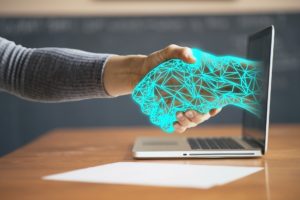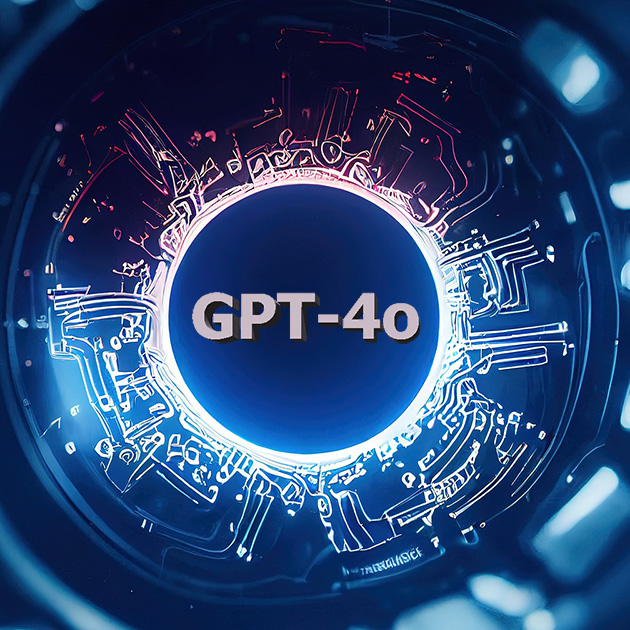AI + HI = Better Decisions
 More and more news articles report on Artificial Intelligence (AI) technology’s constant march towards rendering humans obsolete. Researchers from Oxford and Google’s DeepMind recently published a paper saying AI will bring on humanity’s demise. James Earl Jones recently retired from voicing Darth Vader and signed over his voice rights for generative AI programs to synthesize speech for the Dark Lord. This has artists and creative professionals worried about their futures.
More and more news articles report on Artificial Intelligence (AI) technology’s constant march towards rendering humans obsolete. Researchers from Oxford and Google’s DeepMind recently published a paper saying AI will bring on humanity’s demise. James Earl Jones recently retired from voicing Darth Vader and signed over his voice rights for generative AI programs to synthesize speech for the Dark Lord. This has artists and creative professionals worried about their futures.
News about machines replacing humans is nothing new. Evil machines besting humans have been around since the beginning of mass media. Since many of us use products that run some form of AI on a daily basis, news about our replacements is coming at a rapid pace. Before Oxford and Google researchers predicted technological singularity, another Google researcher who was assigned to determine if a chatbot showed prejudice ran to the media and declared, dubiously, that his chat companion was self-aware.
At Qlarant, we believe AI + HI (Human Intelligence) deliver better decisions and outcomes. With so much news encouraging us to bow down to our robot overlords, I thought it would be great to spend this RIViR Reads offering encouragement for you to believe humanity has a bright future.
What is AI?
AI is a broad collection of terms that encompass any technique that mimics human capabilities. The first AI systems were symbolic, rules-based systems that made conclusions on data using very specific instructions for very specific problem domains. Watson’s ability to defeat humans playing Jeopardy and make medical diagnoses are two forms of rules-based systems that mimic mankind’s ability to recall information from references and come to conclusions. Calling Watson an intelligent system is a stretch. Watson’s intelligence used brute force computing power to lookup reference material quickly. After Watson finds an answer, an AI program is used to generate human understandable text. Watson was purposefully built to conquer Jeopardy. If we were to ask Watson to troubleshoot engine problems on my 1979 Honda CVCC, I’d wager he wouldn’t know where to begin.
 Our everyday AI consists of computer programs trained on lots and lots of data labeled or cataloged by human beings. These programs use a technique called machine learning where if you have a large amount of carefully labeled data, the machine can learn the patterns needed to process input data similar to what it’s been trained on. Image recognition systems, chatbots and other language systems, and driverless cars use a form of machine learning.
Our everyday AI consists of computer programs trained on lots and lots of data labeled or cataloged by human beings. These programs use a technique called machine learning where if you have a large amount of carefully labeled data, the machine can learn the patterns needed to process input data similar to what it’s been trained on. Image recognition systems, chatbots and other language systems, and driverless cars use a form of machine learning.
Newer, state-of-the-art programs are using generative techniques to create human-like speech, pictures of people, music, and art work. These systems use a large amount of carefully labeled training material: images, speech audio, and text that is remixed using input prompts and randomness to generate new music, art, and speech.
What Isn’t AI?
For all of the doom and gloom coming from one camp, and the hype and promises from another camp, today’s AI isn’t going to replace humans for a long time. AI has made great strides, but is extremely weak and brittle. Current AI systems are easily subverted by human interlopers. Image recognition systems are easily fooled by altering just a few pixels. Well-intentioned chatbots can seem ignorant when chatting with clever humans. With all of the hype surrounding driverless fleet systems displacing humans, driverless cars still have accidents and it’s hard to explain the AI’s decision making when they do.
Current AI systems require living and breathing human beings to carefully label and categorize the data these systems use for training. Trained AI models don’t transfer their intelligence very well. AI models used for developing an image recognition system aren’t transferrable to speech recognition systems. We tend to think of Artificial General Intelligence as the moment we bow to our robot overlords. To paraphrase Melanie Mitchell, a former Google AI researcher, stringing together a bunch of single purpose AI systems doesn’t make an artificial general intelligence system.
Our Approach to AI (AI + HI = BetterDecisions)
Despite my thoughts about current AI, I’m very bullish on the technology and believe it can improve the human experience. AI is well suited for automating many tasks, and humans are far superior in others. At Qlarant, we pursue ethical approaches to using AI and machine learning and use the technology to augment human capabilities. Our industry demands careful scrutiny and consideration of personal health information and financial data.
Our goal is to give our human staff tools that help them be more productive and efficient while giving them the final say on making decisions. We do this by not leaving models to run on their own devices. Our analyst teams work with subject matter experts to create confidence and composite scoring metrics that help our staff determine how well models are performing at run time, not just what their own score is. A collaborative approach to AI and machine learning model adoption is key to creating the best outcomes.
RIViR, is a decision support system that suggests courses of action a user may take to resolve their issues. Even though RIViR suggests specific courses of action, final decisions are left to the user. Think of it like this — Google maps may plot you the fastest route but your own experiences may lead you to take a different route because you know school buses run slower on Wednesdays. AI technology is rapidly shaping our world, and we should pay attention to real concerns. AI is certain to automate many human processes we take for granted, but that isn’t unlike any other rapid adoption of technology we’ve witnessed. Today’s AI systems are weak and easily compromised which requires human supervision. We can guide the adoption of AI and machine learning technologies by focusing on ways we can augment human capability instead of replacing man with machine.







